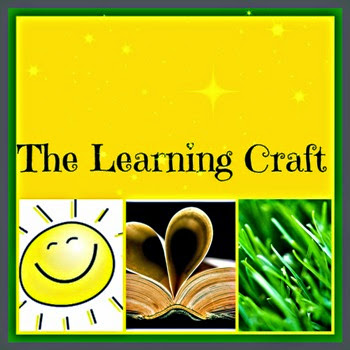When will we get here? I hope soon!
Pages
▼
14/08/2013
11/08/2013
Facebook, Twitter and YouTube - Useful for teachers and students in secondary and higher education
Many Nigerian schools are yet to adopt the type of thinking required by the Internet era. There still exists the thinking that originated in the old idea of learning to learn. A thinking which is now stale whether we choose to believe, accept and adopt it or not. The list is long - facilities such as the interactive whiteboards, computers or tablets as instructional materials; or the use of social media for high school students such as Facebook, Twitter, YouTube, Instagram etc which all serve as effective communication tool are mostly absent in the teaching-learning process.
Did you know that about 96 percent of students with internet access report using social networking technologies, and that three in five (59 percent) use these tools to talk about educational topics online? Maybe not as much in Nigeria because our access to the Internet is still growing.
Social media has revolutionised many industries, but perhaps its impact on the classroom, and the education system as a whole is the most striking. Whether it’s through the use of private social groups, Facebook Pages, classroom Twitter profiles, embracing these social networking is showing that, if used correctly, these platforms can have a positive impact on grades.
There are three main social media powerhouses that provide encouraging learning opportunities and they are Facebook, Twitter, and YouTube. These trilogy stand out amongst others because of their applicability.
Facebook: ideas are spread, opinions are voiced, and arguments are had. References from links found on other social media sites, as well as your own documents, can be posted openly for classroom discussions.
Twitter: students in a project who have a Twitter account will follow and/or create group pages on Twitter related to the subject of interest. Ideas are spread, important links are posted, research results and open discussions are diagnosed.
Youtube: You can find very educational information there. I have found many teaching/learning ideas on YouTube channels; I have viewed and shared many videos with my kids on fun ways to learn multiplication tables. There are loads of teaching ideas on any topic that comes to mind...algebra, geometry, reading comprehension, drama etc.
I hope teachers can begin to use these platforms to spread knowledge with their students as it not only promises to be fun and interactive, above all, it incites the use of the social media for fantastic learning opportunities. It is probably easier to get our students to do their assignments on it as they may spend ample time there. Students can now begin to use and view them as mediums for academic and society-oriented courses.
Teachers should give social media assignments in their classes or create a Facebook group for an entire class. Let us bring the classroom together on social media and enjoy the beauty of the changing landscapes it is brings to their world.
07/08/2013
Cramming - A popular curse of education in Nigeria
In education, cramming is the practice of working intensively to absorb large volumes of information and facts in short amounts of time. It is usually done by students in preparation for upcoming tests or exams, especially at the last minute. Educators discourage the use if cramming because the hurried coverage of material often results in poor long-term retention of material and leads to mediocrity. Rote learning is
I feel it is very important for students to memorize some math facts such as multiplication tables in younger children. The issue that often arises here is the method applied in the teaching process. I know it’s very important for primary school children to learn math facts and spelling words so that when they get older, they can easily pass through tests which often helps in building confidence. However, memorization or cramming does not have to come just by pure recitations which does not allow for critical thinking and in depth understanding. For example, multiplication tables can be learnt using templates of classic nursery rhymes and even rap songs. Spellings should be taught using visual aids because the brain is known to absorb what is seen often easier.
Cramming is becoming quite common among students at the primary, secondary and post-secondary level and I consider it a negative study technique. The pressure to perform well in the classroom often results in the cramming method of studying and Students are often forced to cram after improper time utilization or in efforts to understand information shortly before being tested. Improper time management is usually the cause for last-minute cramming sessions, and many study techniques have been developed to help students succeed instead of cramming. Active learning and critical thinking are great methods which emphasize the retention of material and facts through the use of class discussions, study groups and individual thinking.
For a long time, cramming or memorization has been used and is still used in many classrooms but they now belong in the past. Teaching students what to think instead of how to think keeps generations at a higher level of ignorance which seems to be apparent in our society these days. If children are made to think through active participation, they develop conceptual and analytical skills needed to help them excel in secondary and post secondary school.
“We forget those things if they’re just learned for the sake of the test.”
Neurologist Judy Willis of Edutopia goes even further saying that over-emphasis on rote memorization over-stresses the brain and detours our thinking away from the ‘rational, prefrontal cortex’ where higher-order thinking occurs.
We need to re-strategize our teaching methods. Technology is fast creeping in on us and we have to go with the tide. Two key strategies: ACTIVE LEARNING AND CRITICAL THINKING
02/08/2013
Let's blame ASUU --- university teachers
I worry when we lose track of our needs, redirect blame and seemingly continue to chase shadows. Upon whose shoulders should the task of ensuring our students are in school? Remuneration of teachers is as important as the teaching - learning process because their because their basic requirements must be secure. But that is not all!
In the 2009 Agreement, the government promised to provide fund for revitalising public universities; provide assistance to state universities; establish a Nigerian University Pension Commission, NUPEMCO, and progressively increase the annual budgetary allocation to education to 26 per cent between 2009 and 2020.
Government also promised to pay earned allowances, transfer federal government landed property to universities and to set up research equipment provision to laboratories and classrooms, the government has failed to keep its promises.
Why do some lay the blame on the Academic Staff Union of Universities (ASUU)? Why don't we demand accountability and discipline from our government once and for all? An agreement should not be breached abruptly!
Nigeria is fast becoming a euphoric state. There is increasingly a flagrant excessive interest in 'celebri-talk' and less 'real-talk' (I guess it keeps the people happy which I am not opposed to). However, we have real problems in our education system which as a people, we must work in agreement to tackle! Let's sign a petition that will end the ASUU Strike! Sign a petition to improve our schools, to get our children back to school and to implement our good policies on education! Together, we can save the future of this country; just by our relentless demand for the improvement of the quality of education in Nigeria. No nation can rise OR has risen above the level of their education.
We have been called the 'proverbial land of no tomorrow'.....sad! Education helps to eliminate poverty and in return, we are handed a sure tomorrow.
Education is preparation for life. Education is life itself ~ John Dewey
01/08/2013
8 ways parents discourage their kids from reading
No parent intentionally tries to discourage their child from reading. But sometimes our actions do just that. Kids may be resilient, but they are also really sensitive, and how we handle reading in our homes can work for or against our kids’ reading attitude. Once a child writes reading off, it’s much harder to reel them back in and get them to give it a second shot. Here are eight things to avoid .
1. Don’t put down your child’s reading materials. Comics and books with crude humour often get dragged through the mud, as do character-driven books. Their choices may not be your favorite, but when you say no to a book, what your child may hear is no to reading. Instead of banning their beloved reading material , find a way to add in some more desirable books into the mix.
2. Don’t provide the wrong level material. No one likes reading something that makes them feel stupid. If the books are too hard they will frustrate your child. If the books are too easy, they will bore your little reader. You don’t need to know your child’s exact level; their interest will let you know. Go to the bookstore or library when you have a chunk of time and let them explore. Take out a bunch of books and try them out. Find favorite authors and read everything they’ve written, then start again with a new author.
3. Don’t use reading as a punishment. Saying things like “Go to your bedroom and read!” or “If you do that again, I will make you go read.” sets kids up to associate reading as a negative thing. Keep punishments and reading separate.
4. Don’t forget to give your child books as a gifts. Gifts are special, and starting at birth books make the best gifts – especially if you read them with the person who gave them to you. Book fairs at schools are a great place for kids to get excited about books, and we use them as treats!
5. Don’t explain to your child they aren’t really reading yet when they are only looking at the pictures. If we tell our children they aren’t readers, they will believe it, and to a child this isn’t as fluid as it is for adults. They don’t see that reading is developmental, and this blow to their confidence can really stick with them. If they aren’t decoding words yet, let them know that they can “read the pictures” and tell the story that way until they can read the words too.
6. Don’t forget to let your kids see you read for fun. Studies show that kids with parents who read often for pleasure are more likely to read for fun themselves. So if you want a kid who loves to read, let them see you reading too.
7. Don’t over-correct and over-practice. It’s exciting when your child starts to read independently, but forcing them to read and reread text until they have it perfect is not the most effective way to encourage or instruct. Read with your new reader and help when they ask for it. If they miss a word but the meaning is intact, don’t interrupt. If the meaning of the sentence is all screwy, wait for a natural pause and ask them, “Did that make sense?” You can revisit the word if it didn’t. Use the pictures and the rest of the text as clues if the word is too tough to decode. If you have to do this often, the text is too hard for your child. Choose something easier, or if they are insistent take turns reading so there is some fluency being modeled.
8. Don’t forget to read to your kids. Every day. Even those days when you just want them to go to sleep already!! It makes all the difference.
www.notimeforflashcards.com





